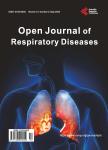Dead Space Breathing in Patients with Malignancies: Determination by Cardiopulmonary Exercise Testing
Dead Space Breathing in Patients with Malignancies: Determination by Cardiopulmonary Exercise Testing作者机构:Division of Pulmonary Critical Care and Sleep Medicine Keck School of Medicine University of Southern California Medical Center Los Angeles CA USA
出 版 物:《Open Journal of Respiratory Diseases》 (呼吸病期刊(英文))
年 卷 期:2022年第12卷第1期
页 面:15-36页
学科分类:1002[医学-临床医学] 100214[医学-肿瘤学] 10[医学]
主 题:Cardiopulmonary Exercise Testing Cardiovascular Limitation Dead Space Breathing Dyspnea Malignancies Oxygen Uptake Pulmonary Vascular Limitation Ventilatory Equivalents
摘 要:Rationale: Patients with cancer commonly experience dyspnea originating from ventilatory, circulatory and musculoskeletal sources, and dyspnea is best determined by cardiopulmonary exercise testing (CPET). Objectives: In this retrospective pilot study, we evaluated patients with hematologic and solid malignancies by CPET to determine the primary source of their dyspnea. Methods: Subjects were exercised on a cycle ergometer with increasing workloads. Minute ventilation, heart rate, breathing reserve, oxygen uptake (V’O2), O2-pulse, ventilatory equivalents for carbon dioxide and oxygen (V’E/V’CO2 and V’E/V’O2, respectively) were measured at baseline and peak exercise. The slope and intercept for V’E/V’CO2 was computed for all subjects. Peak V’O2 4% predicted indicated a circulatory or ventilatory limitation. Results: Complete clinical and physiological data were available for 36 patients (M/F 20/16);32 (89%) exhibited ventilatory or circulatory limitation as shown by a reduced peak V’O2 and 10 subjects with normal physiologic data. The largest cohort comprised the pulmonary vascular group (n = 18) whose mean ± SD peak V’O2 was 61% ± 17% predicted. There were close associations between V’O2 and spirometric values. Peak V’E/V’O2 and V’E/V’CO2 were highest in the circulatory and ventilatory cohorts, consistent with increase in dead space breathing. The intercept of the V’E-V’CO2 relationship was lowest in patients with cardiovascular impairment. Conclusion: Dyspneic patients with malignancies exhibit dead space breathing, many exhibiting a circulatory source for exercise limitation with a prominent pulmonary vascular component. Potential factors include effects of chemo- and radiation therapy on cardiac function and pulmonary vascular endothelium.



